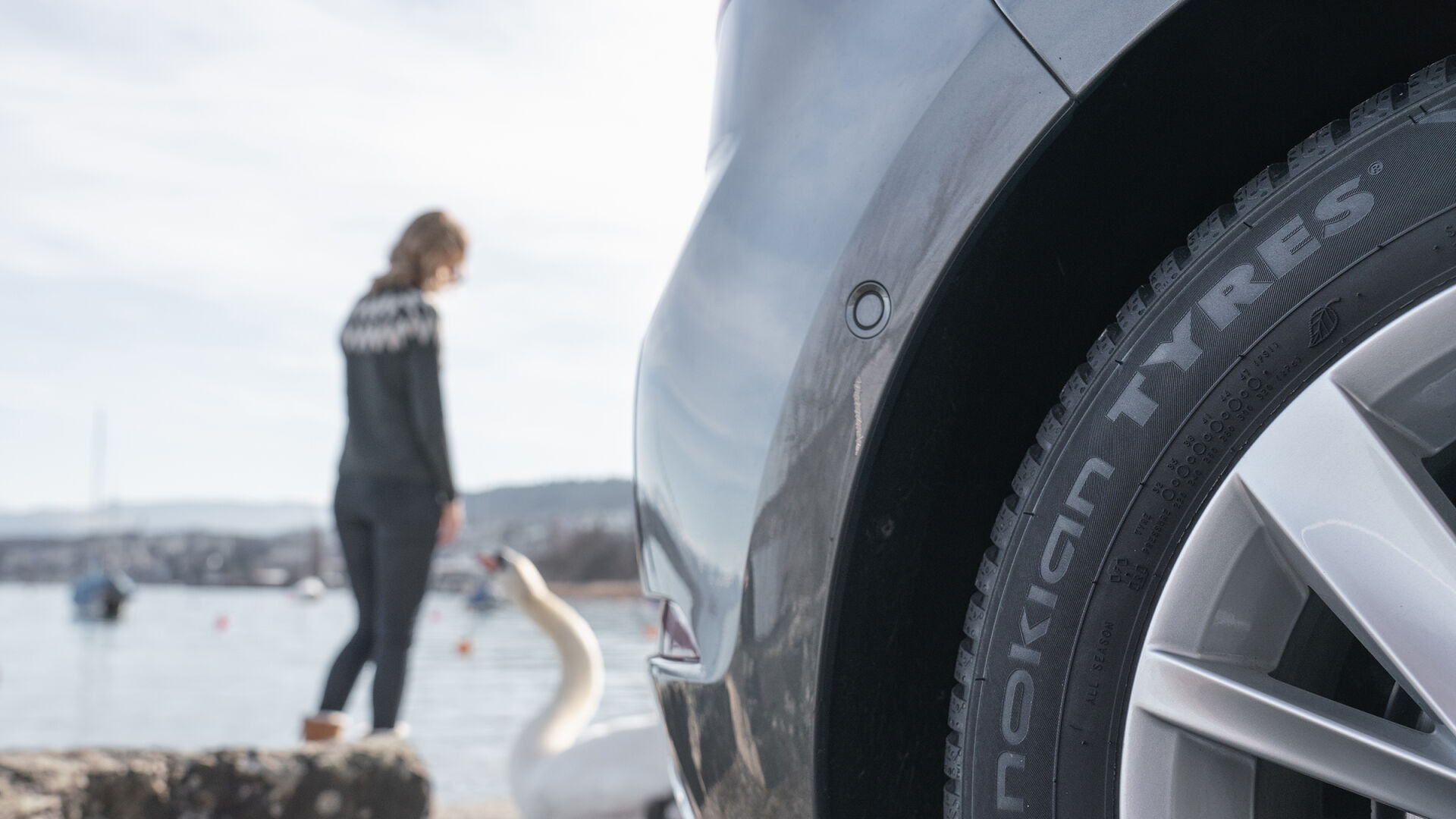
What is the EU tire label?
Find the best tires for your car
Since 2012, the EU tire label has helped drivers compare between tires that are on offer in the EU area. The label is reminiscent of the energy efficiency labels on household appliances, and it helps by classifying the tires in terms of safety and fuel-economy. The label describes the wet grip, rolling noise, and fuel economy of the tire as well as ice grip and snow grip of a winter tire. All the values on the label are the result of established testing practices used by all tire manufacturers that sell tires in the EU area. The label applies to all summer, all-season and non-studded winter tires for passenger cars, SUVs, vans, trucks, and buses.
The aim of the label is to simplify the selection of safer and more fuel efficient tires
The aim of the tire label is to help you make informed choices when you are buying tires. The information on the label tells you about the tire’s safety on wet, snowy or icy roads, its impact on your vehicle’s fuel consumption as well as how loud the tire is outside the car when you drive it. According to the label values, it is easier to choose a tire that suits your needs the best.
What you should consider when reading the label is dependent on your usual driving conditions as well as whether you are looking for summer or winter tires. For example, wet grip is an important value on a summer tire driven in an area where it rains a lot during the summer, but equally important in a winter tire used in an area where the winters are mild and rainy. Similarly, wet grip value of a winter tire designed for harsh winter weather and meant to be driven on ice and packed snow is not nearly as important as that it has the snow and ice grip markings.
Although the label makes it easier to compare between tire models, it’s also advisable to consult the tire retail experts, independent magazine test articles and tire manufacturers’ web sites before making the final purchase decision.